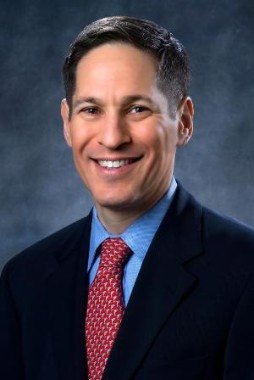User login
The amount of opioid painkillers that physicians prescribe appears to have more to do with where they live than the patient’s condition, according to a new analysis from the Centers for Disease Control and Prevention.
Nationwide, physicians and other health care providers prescribed 82.5 opioid pain relievers per 100 persons during 2012. But prescribing rates varied widely. Hawaii had the lowest rate at 52.0 prescriptions per 100 persons; and Alabama had the highest at 142.9 prescriptions per 100 persons, according to the CDC (MMWR Morb. Mortal. Wkly. Rep. 2014;63:1-6).
The CDC analyzed the IMS Health National Prescription Audit database of 2012 prescription data from 57,000 pharmacies nationwide.
Regionally, the Southern states had the highest rates of opioid pain reliever prescribing overall, while states in the Northeast had the highest prescribing rate for high-dose opioids and for long-acting or extended-release formulations.
"What type of pain treatment you get shouldn’t depend on where you live," Dr. Tom Frieden, CDC director, said during a July 1 press conference to announce the findings.
The large variations don’t exist because these states have more people with pain needs, Dr. Frieden said. Rather, the variation is due to a combination of factors, he said, including a lack of clear consensus on evidence about when to use opioids, abuse of the drugs, and the growth of "pill mills" that do large volumes of inappropriate prescribing of opioids.
Dr. Frieden urged state governments to step up their education of physicians.
"If we’re not careful, the treatment can quickly become the problem," Dr. Frieden said.
But there is encouraging news from Florida about reversing overprescribing and related deaths from drug overdose, according to the CDC.
In a separate report, CDC officials showed that various law and enforcement actions were associated with a rapid decrease in drug overdose deaths and opioid prescribing rates, though they couldn’t say for certain that the policy changes were the cause.
During 2003-2009, drug overdose deaths in Florida increased 61% to 2,905, with the largest increase caused by the opioid oxycodone and the benzodiazepine alprazolam. Following policy changes, drug overdoses decreased 16.7% during 2010-2012, from 3,201 to 2,666. Oxycodone overdose deaths dropped 52.1%. The state reported similar decreases in prescribing rates during the same time period.
In response to soaring overdose rates, the Florida legislature required pain clinics using controlled substances to register with the state by January 2010. And in 2011, law enforcement agencies began conducting statewide raids, which resulted in arrests, asset seizures, and the closure of about 250 pain clinics. Also in 2011, the state legislature barred physician dispensing of schedule II or III drugs from their offices and required reporting to a new prescription drug monitoring program.
Dr. Frieden said the Florida experience is significant because it’s the first substantial and sustained decline in opioid prescribing and overdose deaths in a decade. "Change at the state level has the greatest promise," he said.
The analysis was conducted by researchers at the Centers for Disease Control and Prevention, and Emory University, both in Atlanta. The authors reported having no financial disclosures.
On Twitter @maryellenny
The amount of opioid painkillers that physicians prescribe appears to have more to do with where they live than the patient’s condition, according to a new analysis from the Centers for Disease Control and Prevention.
Nationwide, physicians and other health care providers prescribed 82.5 opioid pain relievers per 100 persons during 2012. But prescribing rates varied widely. Hawaii had the lowest rate at 52.0 prescriptions per 100 persons; and Alabama had the highest at 142.9 prescriptions per 100 persons, according to the CDC (MMWR Morb. Mortal. Wkly. Rep. 2014;63:1-6).
The CDC analyzed the IMS Health National Prescription Audit database of 2012 prescription data from 57,000 pharmacies nationwide.
Regionally, the Southern states had the highest rates of opioid pain reliever prescribing overall, while states in the Northeast had the highest prescribing rate for high-dose opioids and for long-acting or extended-release formulations.
"What type of pain treatment you get shouldn’t depend on where you live," Dr. Tom Frieden, CDC director, said during a July 1 press conference to announce the findings.
The large variations don’t exist because these states have more people with pain needs, Dr. Frieden said. Rather, the variation is due to a combination of factors, he said, including a lack of clear consensus on evidence about when to use opioids, abuse of the drugs, and the growth of "pill mills" that do large volumes of inappropriate prescribing of opioids.
Dr. Frieden urged state governments to step up their education of physicians.
"If we’re not careful, the treatment can quickly become the problem," Dr. Frieden said.
But there is encouraging news from Florida about reversing overprescribing and related deaths from drug overdose, according to the CDC.
In a separate report, CDC officials showed that various law and enforcement actions were associated with a rapid decrease in drug overdose deaths and opioid prescribing rates, though they couldn’t say for certain that the policy changes were the cause.
During 2003-2009, drug overdose deaths in Florida increased 61% to 2,905, with the largest increase caused by the opioid oxycodone and the benzodiazepine alprazolam. Following policy changes, drug overdoses decreased 16.7% during 2010-2012, from 3,201 to 2,666. Oxycodone overdose deaths dropped 52.1%. The state reported similar decreases in prescribing rates during the same time period.
In response to soaring overdose rates, the Florida legislature required pain clinics using controlled substances to register with the state by January 2010. And in 2011, law enforcement agencies began conducting statewide raids, which resulted in arrests, asset seizures, and the closure of about 250 pain clinics. Also in 2011, the state legislature barred physician dispensing of schedule II or III drugs from their offices and required reporting to a new prescription drug monitoring program.
Dr. Frieden said the Florida experience is significant because it’s the first substantial and sustained decline in opioid prescribing and overdose deaths in a decade. "Change at the state level has the greatest promise," he said.
The analysis was conducted by researchers at the Centers for Disease Control and Prevention, and Emory University, both in Atlanta. The authors reported having no financial disclosures.
On Twitter @maryellenny
The amount of opioid painkillers that physicians prescribe appears to have more to do with where they live than the patient’s condition, according to a new analysis from the Centers for Disease Control and Prevention.
Nationwide, physicians and other health care providers prescribed 82.5 opioid pain relievers per 100 persons during 2012. But prescribing rates varied widely. Hawaii had the lowest rate at 52.0 prescriptions per 100 persons; and Alabama had the highest at 142.9 prescriptions per 100 persons, according to the CDC (MMWR Morb. Mortal. Wkly. Rep. 2014;63:1-6).
The CDC analyzed the IMS Health National Prescription Audit database of 2012 prescription data from 57,000 pharmacies nationwide.
Regionally, the Southern states had the highest rates of opioid pain reliever prescribing overall, while states in the Northeast had the highest prescribing rate for high-dose opioids and for long-acting or extended-release formulations.
"What type of pain treatment you get shouldn’t depend on where you live," Dr. Tom Frieden, CDC director, said during a July 1 press conference to announce the findings.
The large variations don’t exist because these states have more people with pain needs, Dr. Frieden said. Rather, the variation is due to a combination of factors, he said, including a lack of clear consensus on evidence about when to use opioids, abuse of the drugs, and the growth of "pill mills" that do large volumes of inappropriate prescribing of opioids.
Dr. Frieden urged state governments to step up their education of physicians.
"If we’re not careful, the treatment can quickly become the problem," Dr. Frieden said.
But there is encouraging news from Florida about reversing overprescribing and related deaths from drug overdose, according to the CDC.
In a separate report, CDC officials showed that various law and enforcement actions were associated with a rapid decrease in drug overdose deaths and opioid prescribing rates, though they couldn’t say for certain that the policy changes were the cause.
During 2003-2009, drug overdose deaths in Florida increased 61% to 2,905, with the largest increase caused by the opioid oxycodone and the benzodiazepine alprazolam. Following policy changes, drug overdoses decreased 16.7% during 2010-2012, from 3,201 to 2,666. Oxycodone overdose deaths dropped 52.1%. The state reported similar decreases in prescribing rates during the same time period.
In response to soaring overdose rates, the Florida legislature required pain clinics using controlled substances to register with the state by January 2010. And in 2011, law enforcement agencies began conducting statewide raids, which resulted in arrests, asset seizures, and the closure of about 250 pain clinics. Also in 2011, the state legislature barred physician dispensing of schedule II or III drugs from their offices and required reporting to a new prescription drug monitoring program.
Dr. Frieden said the Florida experience is significant because it’s the first substantial and sustained decline in opioid prescribing and overdose deaths in a decade. "Change at the state level has the greatest promise," he said.
The analysis was conducted by researchers at the Centers for Disease Control and Prevention, and Emory University, both in Atlanta. The authors reported having no financial disclosures.
On Twitter @maryellenny
FROM MORBIDITY AND MORTALITY WEEKLY REPORT
Key clinical point: Increasing physician education, changes in legislation, and enforcement action at the state level may have the greatest promise for decreasing overdose deaths.
Major finding: In 2012, prescribers wrote 82.5 opioid pain reliever prescriptions per 100 persons in the United States. The state rates ranged from a low of 52.0 prescriptions per 100 (Hawaii), to a high of 142.9 per 100 (Alabama).
Data source: IMS Health National Prescription Audit database with 2012 prescription data from 57,000 pharmacies nationwide.
Disclosures: The analysis was conducted by researchers at the Centers for Disease Control and Prevention, and Emory University, both in Atlanta. The authors reported having no financial disclosures.

